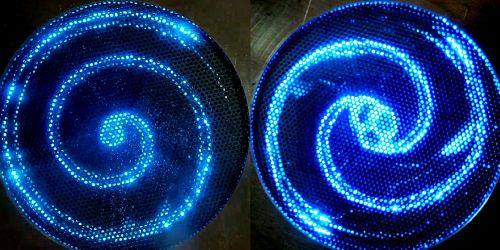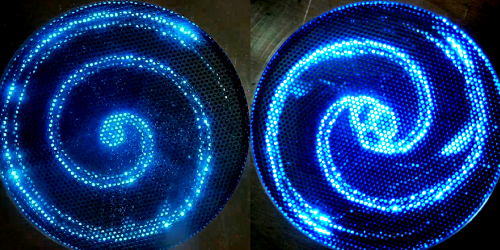Antispiral Formation at a Liquid Surface
Cyclones and galaxies provide familiar examples of spiral patterns in nature. As they rotate, spirals usually spin with their arms trailing the direction of rotation, and instances where they do the opposite, known as antispirals, are rare. Harunori Yoshikawa at the University of Côte d’Azur, France, and colleagues now report the observation of spontaneous antispirals in a free-falling liquid.
Their setup is a cylindrical reservoir with an array of tiny holes at the bottom. The reservoir is filled with silicone oil that escapes by gravity through the holes at a constant rate, forming a horizontal film under the reservoir. When the film reaches a certain thickness, it becomes unstable to liquid discharges that fall from the film’s downward-facing surface in the form of droplets, columns, or curtains. In the present experiment, the researchers adjusted the oil supply rate in order to have curtains of falling oil. They observed the curtains gradually wind around a core region, evolving into stable spirals with one to six arms that rotated either clockwise or counterclockwise. Surprisingly, the spirals were always inwardly rotating antispirals.
Spiral formation has been widely studied in excitable and oscillatory media, which naturally form waves or other types of periodic modulations. The present study provides an example of spirals in a nonoscillatory medium, which must be externally driven to produce periodic structures. In their model of the antispiral cascades, Yoshikawa and colleagues show that the driving mechanism is the liquid supply through the holes, which creates periodic discharges through the so-called Rayleigh-Taylor instability in the film. Further study of this externally driven spiral formation may help explain biological systems that form patterns through interaction with their surroundings.
This research is published in Physical Review Letters.
–Nicolas Doiron-Leyraud
Nicolas Doiron-Leyraud is a Corresponding Editor for Physics.





